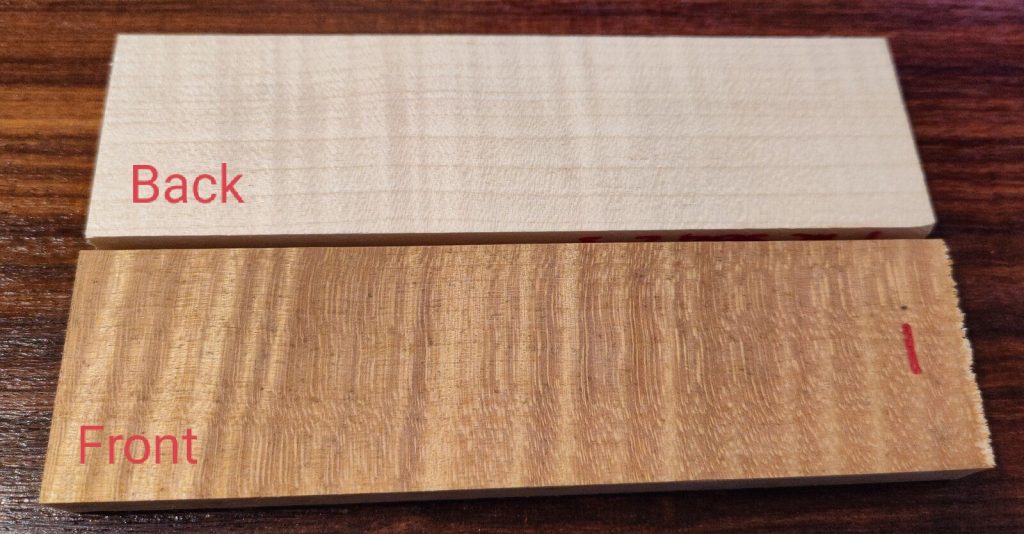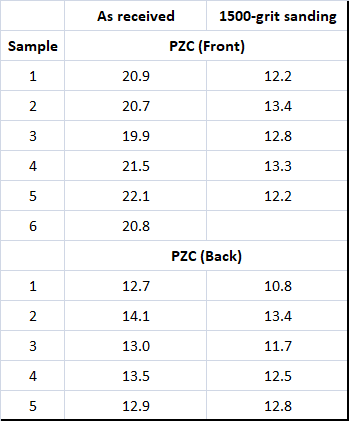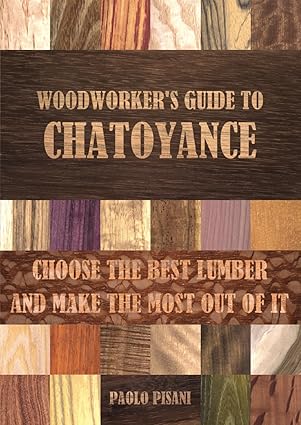These field maple samples were obtained from a veneer leftover board, kindly offered by Seralvo. This board had been exposed to a significant amount of sunlight on one side (“front”), while it appears pristine on the other side (“back”). Both sides had been sliced for veneer making.

The samples were tested for chatoyance on both sides in the “as received” condition, and then sanded down to core material, fine-sanded to 1500-grit and then tested again for chatoyance. Table below summarizes results showing significantly higher values on average for the exposed samples.

Pictures below show some of the samples:








Want to know more? Get Woodworker’s Guide to Chatoyance!

Available on Amazon in 12 countries – just click on your flag below…
… and enjoy the read!











